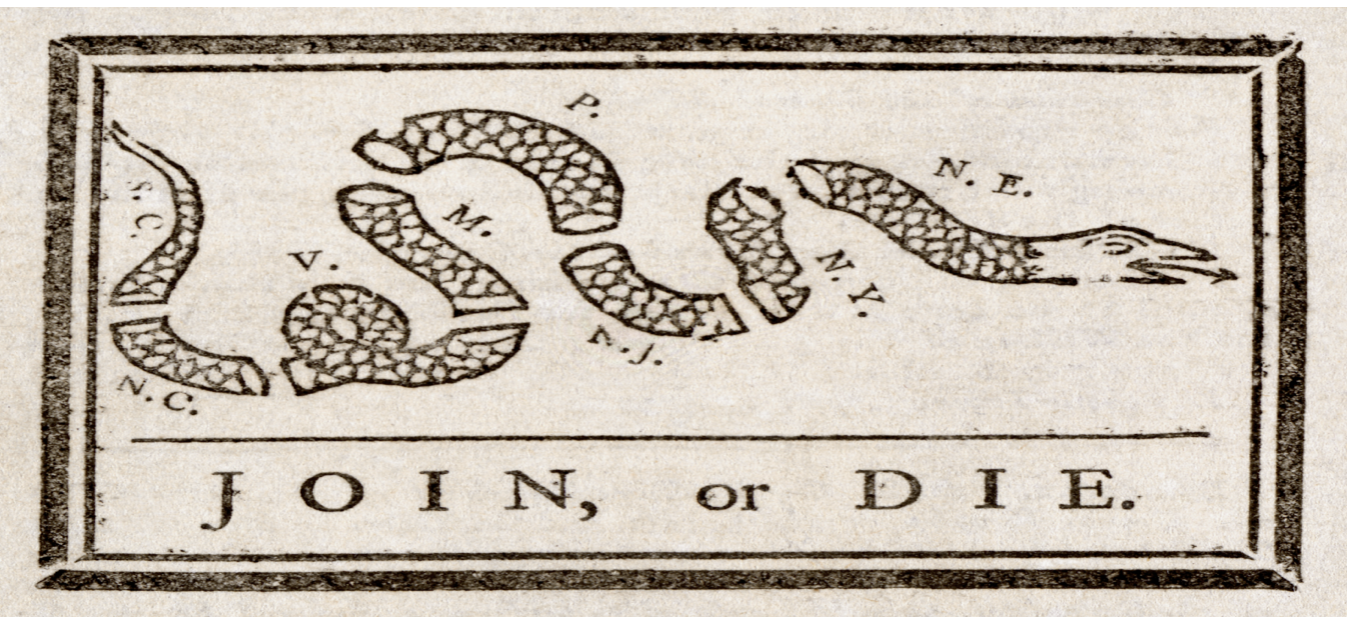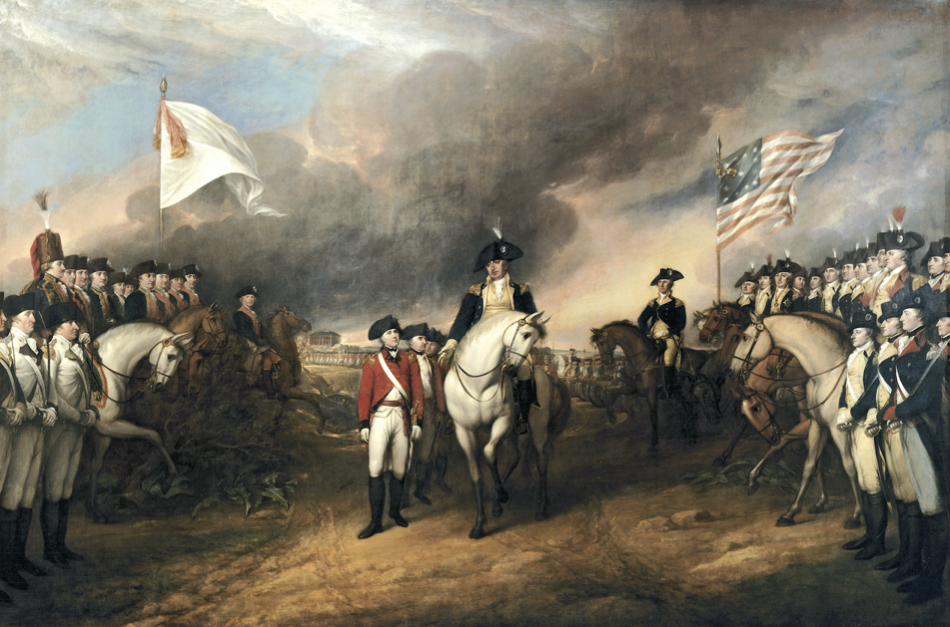APUSH Unit 3 - Overview
During this time period, the American colonies are moving from loyal subjects of the crown to desiring independence and finally facing the challenges of a new nation.🗽
As a result of the growing enlightenment ideas and the end of salutary neglect, the colonies fought and won a revolutionary war creating a republic in the United States. However, these drastic changes created monumental challenges in the new nation, resulting in the growth of political parties, debates over federal power, and international quarrels with European countries. Ultimately, the time period ended with the Revolution of 1800, where political power shifted from the Federalists to the Democratic-Republicans with little resistance, indicating a peaceful transfer of power in the republic.
Seven Years War (French and Indian War)
The Ohio Valley and competition for resources such as beaver fur set the stage for a huge clash between the British and the French. 💥 Although Benjamin Franklin had warned against an inevitable conflict between the two powers and had suggested the Albany Plan to establish a coordinated defense against an attack, the colonies were unwilling to give up their autonomy to unite. Upon the conclusion of a British victory💪 and the Treaty of Paris 1763, the colonials believed they had shown their importance and worth to the mother country. However, the crown and Parliament felt otherwise. Rather, they felt that the colonies did not contribute enough and were thus responsible for paying for the costly war.💲

Taxes and Protests
Salutary neglect ended as Parliament began to enforce its mercantilistic policies and taxes to pay for the costs of the French and Indian War. Although the Proclamation of 1763 offended many western colonists, the real trouble began with implementing the Stamp Act in 1765.📜 Previous taxes often impacted the wealthy, but the stamp tax on all printed documents affected everybody. In addition, this was the first time the colonists were expected to pay a direct tax.
Patrick Henry sparked a movement with his belief in No Taxation Without Representation. Patriotic colonists united against the act, forming protest groups such as the Sons and Daughters of Liberty.👦👧 In addition, boycotts brought the colonies together under a common cause and inflicted economic damages upon the British treasury.
King George III 👑 and Parliament implemented additional strategies for collecting revenue, ultimately leading to the Boston Tea Party and the Intolerable/Coercive Acts against the port of Boston.😠
These grievances were highlighted in the Declaration of Independence in 1776 and influenced by John Locke and other enlightened thinkers.📝 Additionally, Thomas Paine's Common Sense inspired a movement unified in the desire for independence.
The Revolutionary War
Following the first shots of the conflict at Lexington Green in 1775, the colonies faced some monumental challenges until the Treaty of Paris of 1783. Whites, Blacks, and Native Americans all served in some capacity to ensure a colonial victory. Loyalists/Tories who supported the crown faced challenges from home and abroad following the victory.
George Washington proved his leadership and determination time and time again throughout the war. Although the troops experienced tremendous suffering at Valley Forge, the turning point victory at Saratoga, in which the French agreed to join the colonists in their fight against Britain, set the stage for the monumental victory at Yorktown in 1781. U.S. victory over the British and the new treaty created a united thirteen colonies under the United States of America.✌

New Governments
As the war ended, the new nation learned how to govern itself. Although all states had created a kind of colonial constitution at one point, trying to unite a nation was quite different. Fearing a powerful central authority, the framers initially crafted the Articles of Confederation. The Articles succeeded in negotiating a peace treaty, creating the Land Ordinance of 1785 and the Northwest Ordinance of 1787; however, they failed miserably in protecting the economy, dealing with foreign nations, and addressing domestic concerns, such as Shays' Rebellion. As a result, calls for change led to the Constitutional Convention in Philadelphia.
The Constitution
The delegates initially planned to revise the Articles of Confederation; however, after deliberation, a new constitution emerged. Checks and Balances helped limit individual powers as a foundation for their new constitution. Debates over slavery, trade, and representation resulted in multiple compromises, such as the Three-Fifths Compromise.
The debate over ratification raged as factions, known as the Federalists and Anti-Federalists, emerged. Federalists, supported by Alexander Hamilton, supported the strong central government; Anti-Federalists, such as Thomas Jefferson, supported strong state governments. Anti-Federalists ratified the Constitution only after the decision to add the Bill of Rights to protect individual liberties was agreed upon by the Federalists. 📃
Hamilton's Financial Program
One of the most important issues facing the new nation was economic instability. 💵
Hamilton proposed a financial plan including a national bank, a tariff, and payment of the nation's debt. Jefferson argued against the national bank claiming it was unconstitutional, invoking a strict interpretation of the Constitution. On the other hand, Hamilton supported a loose interpretation of the Constitution, invoking the Necessary and Proper Clause of the Constitution. Ultimately, the bank and plan to pay off the debts were approved in return for establishing the nation's capital in Washington, D.C.
Foreign Affairs
During the early national period, the French Revolution was in full swing in Europe. Washington advocated the policy of Neutrality while wars in Europe led to global issues. Attempts at maintaining peace were made with Jay's weak Treaty with England and Pinckney's successful Treaty with Spain.📜
However, issues with foreign countries spilled over into Adams' presidency as his colleagues pressured him to wage war against France after the notorious XYZ Affair by his own party, the Federalists. Adams successfully avoided a war with France; yet, his support of the Alien and Sedition Acts appeared to counter the principles of free speech.
As the century winded down, those two issues became the focus of the next election, in which Thomas Jefferson defeated Adams in the Revolution of 1800.
_______
Key Ideas
APUSH Unit 3 Timeline
1754-1763 French and Indian War.
1763 Treaty of Paris ends the French and Indian War.
1763 Proclamation Act.
1764 Sugar Act.
1765 Stamp Act.
1767 Townshend Acts.
1770 Boston Massacre.
1773 Boston Tea Party
1774 First Continental Congress meets.
1775 Battles of Lexington and Concord.
1775 Second Continental Congress meets.
1776 Common Sense published.
1781 Articles of Confederation ratified.
1783 Treaty of Paris ends the Revolutionary War
1786 Shays Rebellion
1788 Constitution ratified.
1789 George Washington inaugurated as the first President.
1791 Bill of Rights approved.
1794 Whiskey Rebellion
1796 John Adams elected.
1798 Alien and Sedition Acts.
Key Terms
Albany Plan
Lexington and Concord Jay’s Treaty
Proclamation of 1763
Battle of Long Island
XYZ Affair
natural rights
Valley Forge
Sedition Act
William Pitt
Battle of Yorktown
John Adams
Sugar Act
Treaty of Paris
Stamp Act
Articles of Confederation
virtual representation
Shay’s Rebellion
Quartering Act
Federalists
Sons of Liberty
Antifederalists
Townshend Act
George Washington
nonimportation agreements
William Howe
committees of correspondence
Baron Von Steuben
Tea Act
James Madison
Continental Congress
Judiciary Act
Thomas Paine
Bill of Rights
Common Sense
B.U.S.
Samuel Adams
French Revolution
Thomas Jefferson
Whiskey Rebellion
Major Themes
Competition amongst foreign nations over resources in the new world led to the French and Indian War between France and England.
The desire of colonial governments to assert parliamentary rule during the attempts to raise revenue by the British led to a movement for independence.
Enlightenment Ideas supported the calls for revolution as England denies the colonies representation in their Parliament. In addition, the same ideas emphasized talent over bloodlines and an end to hereditary privilege.
The victory over England resulted in migration westward and the creation of the Land Ordinance and Northwest Ordinance to create guidelines for expansion.
Ideological factions such as the Federalists and Anti-Federalists developed as the country debated the creation of the new Constitution following the inability of the Articles of Confederation to address the needs of the new nation.
Political parties developed over debates centered around finance, foreign affairs, trade, and domestic disputes.
The expansion of slavery and disputes with Native Americans arose as migration patterns carried settlers westward.
The issue of slavery and equality is discussed as movements for abolition begin to arise in northern states.